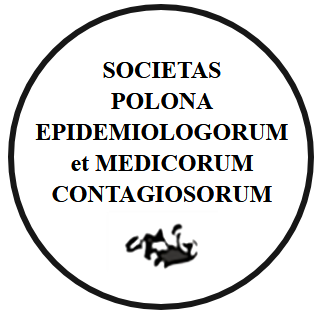RESEARCH PAPER
Diagnosis of an atypical fever in a 55-year-old man
1
Poradnia Chorób Naczyń, Centrum Diagnostyczno – Lecznicze Barska Sp. z o. o., Polska
2
Oddział Okulistyczny, Wojewódzki Szpital im. błogosławionego księdza Jerzego Popiełuszki we Włocławku, Polska
3
Zakład Podstawowej Opieki Zdrowotnej, Niepubliczny Zakład Opieki Zdrowotnej Przychodnia Lekarska "Eskulap", Polska
4
Światowy Instytut Zdrowia Rodziny, Uniwersytet Kaliski, Polska
5
Zakład Medycyny Zapobiegawczej, Uniwersytet Medyczny w Łodzi, Polska
6
Zakład Medycyny Zapobiegawczej, Uniwersyteckie Centrum Kliniczne w Gdańsku, Polska
These authors had equal contribution to this work
Submission date: 2024-02-28
Final revision date: 2024-06-23
Acceptance date: 2024-07-12
Online publication date: 2024-07-31
Publication date: 2024-09-18
Corresponding author
Marcin Joński
Poradnia Chorób Naczyń, Centrum Diagnostyczno – Lecznicze Barska Sp. z o. o., Barska 13, 87-800, Włocławek, Polska
Poradnia Chorób Naczyń, Centrum Diagnostyczno – Lecznicze Barska Sp. z o. o., Barska 13, 87-800, Włocławek, Polska
Przegl Epidemiol 2024;78(2):159-166
KEYWORDS
TOPICS
ABSTRACT
Background: The paper describes a diagnostically challenging case of recurrent fever with an atypical course in a 55-year-old man. The authors highlight the significant difficulty in reaching a correct diagnosis, as well as the doubts and problems associated with the diagnostics. They suggest considering brucellosis as a diagnosis based on the patient's history and the course of the disease characterized by fluctuating, intermittent, and nocturnal fever. Objective: The aim of the study was to present an atypical and diagnostically challenging case of recurrent febrile episodes in a 55-year-old man. Material and methods: A comprehensive diagnostic workup, including laboratory tests, imaging, and specialist consultations, was conducted. The patient's medical history, physical examination, and various diagnostic tests were analyzed. Results: In a patient with recurrent episodes of fever, an infection with Brucella spp. was detected, which was effectively treated with long-term antibiotic therapy. Imaging and laboratory diagnostics, along with specialist consultations, helped rule out other potential causes of the symptoms. The patient achieved lasting improvement following the treatment. Conclusions: There is a high probability that the patient was infected with Brucella bacteria. Diagnostic challenges and the rarity of the disease, considered non-existent in Poland, hinder prompt confirmation or exclusion of infection.
The authors aimed to highlight the possibility of a higher frequency of brucellosis in Poland. They suggest that Brucella bacteria may still be present, causing chronic, unrecognized, recurrent fevers. Based on the case analysis, the authors indicate that the frequent occurrence of this disease in Poland might be higher than reported by statistics.
Share
RELATED ARTICLE
We process personal data collected when visiting the website. The function of obtaining information about users and their behavior is carried out by voluntarily entered information in forms and saving cookies in end devices. Data, including cookies, are used to provide services, improve the user experience and to analyze the traffic in accordance with the Privacy policy. Data are also collected and processed by Google Analytics tool (more).
You can change cookies settings in your browser. Restricted use of cookies in the browser configuration may affect some functionalities of the website.
You can change cookies settings in your browser. Restricted use of cookies in the browser configuration may affect some functionalities of the website.





